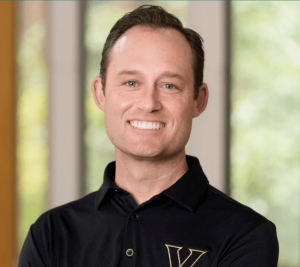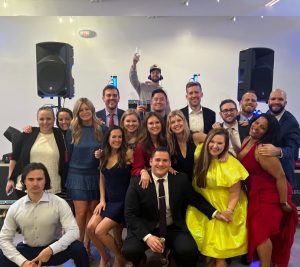By Eigen Escario

Joe Wagstaffe
The Vanderbilt Executive MBA (EMBA) is a 21-month graduate program for working professionals looking to strengthen their executive skill sets and unlock paths to upward growth in their careers. The program features 2 tracks in the second year that cater to students’ personal and professional goals: the Executive Edge track and the Global Immersion track. Joe Wagstaffe, Associate Director of Recruiting and Admissions for the Vanderbilt Executive MBA, discusses the unique opportunities each track offers, as well as key factors to consider when deciding between the 2 options.
The Executive Edge Track
The Executive Edge track is designed for students who want localized learning.
“If you like studying in person and maintaining a consistent schedule, the Executive Edge track will provide a well-rounded experience,” Wagstaffe said. “Students stick with the same schedule for both their first and second year, with classes on campus in Nashville every other Saturday.”
This track is centered around fostering leadership, strategic skills, and financial acumen to prepare students who want to launch new businesses or integrate growth strategies in existing ones. In the second year of the EMBA program, students will remain in cross-functional teams and engage in high-level leadership work.
The Global Immersion Track
The Global Immersion track offers a more international experience as students participate in different residencies throughout the Americas.
“The Global Track students will go on 4 week-long residencies with our partner schools in Vancouver, Mexico City, and São Paulo,” Wagstaffe said. “Instead of coming to class on campus, students will travel to these countries every 2 months starting in August, ending with a residency right here in Nashville.”
This track is designed to immerse students in a traveling classroom setting that delves into the culture, business practices, consumer perceptions, and behaviors of 4 different nations and economies. Students also complete an international capstone strategy project, which is a unique opportunity to work with a multinational company to address business challenges in the Americas.
Comparing Executive MBA Tracks
While the idea of domestic vs. international study might seem like drastically different experiences, they offer similar outcomes.
“From a curriculum standpoint, students will still have a lot of the same deliverables,” Wagstaffe said. “You still have a team atmosphere and similar content on both tracks, but the Global Track is instructed by professors from different universities, so there’s a cultural nuance to it.”
Wagstaffe says that both tracks are unique and enriching in their own ways.
“It is really important to know that students are not missing out on one thing or the other by choosing either track,” Wagstaffe said.
Wagstaffe shares that there are safeguards in place to make sure that students on either track get the best of both worlds, regardless of their track declaration.
“For students on the Global Immersion track, they can audit classes they find useful or interesting back on campus during the time between their residencies,” Wagstaffe explained. “As for the Executive Edge students, they have an international residency at the end of the second year to get that international flavor as well.”
Which Executive MBA Track Should You Choose?
Students pursue the EMBA program with different motivations and goals, and there isn’t a predetermined formula for the type of profile that fits either track.
“We have so many industries represented, and students want to do these tracks for a variety of reasons,” Wagstaffe said. “For those who know they want to work in international business or who need more cross-cultural exposure, there might be a natural pull toward the Global Immersion track.”
Throughout the first year of the program, Wagstaffe highlights the multitude of support and resources from Owen that guide students through their decision-making process.
“There are a couple of times during the first year when professors will meet with everyone to discuss the 2 experiences,” Wagstaffe said, “along with information and Q&A sessions, and follow-up surveys.”
Ultimately, students must thoroughly evaluate their intentions and expectations before and during the program to make the right choice.
“During the application process, students indicate which track they’re interested in, but they’re not beholden to it, as we know circumstances can change,” Wagstaffe said. “It’s crucial to know beforehand why you’re pursuing this program and what you hope to get out of it. If you understand yourself and why you need this degree, it will help inform you on which of the tracks will be the right fit for you.”
To learn more about the Vanderbilt Executive MBA program, student experience, outcomes, and career paths, click here.